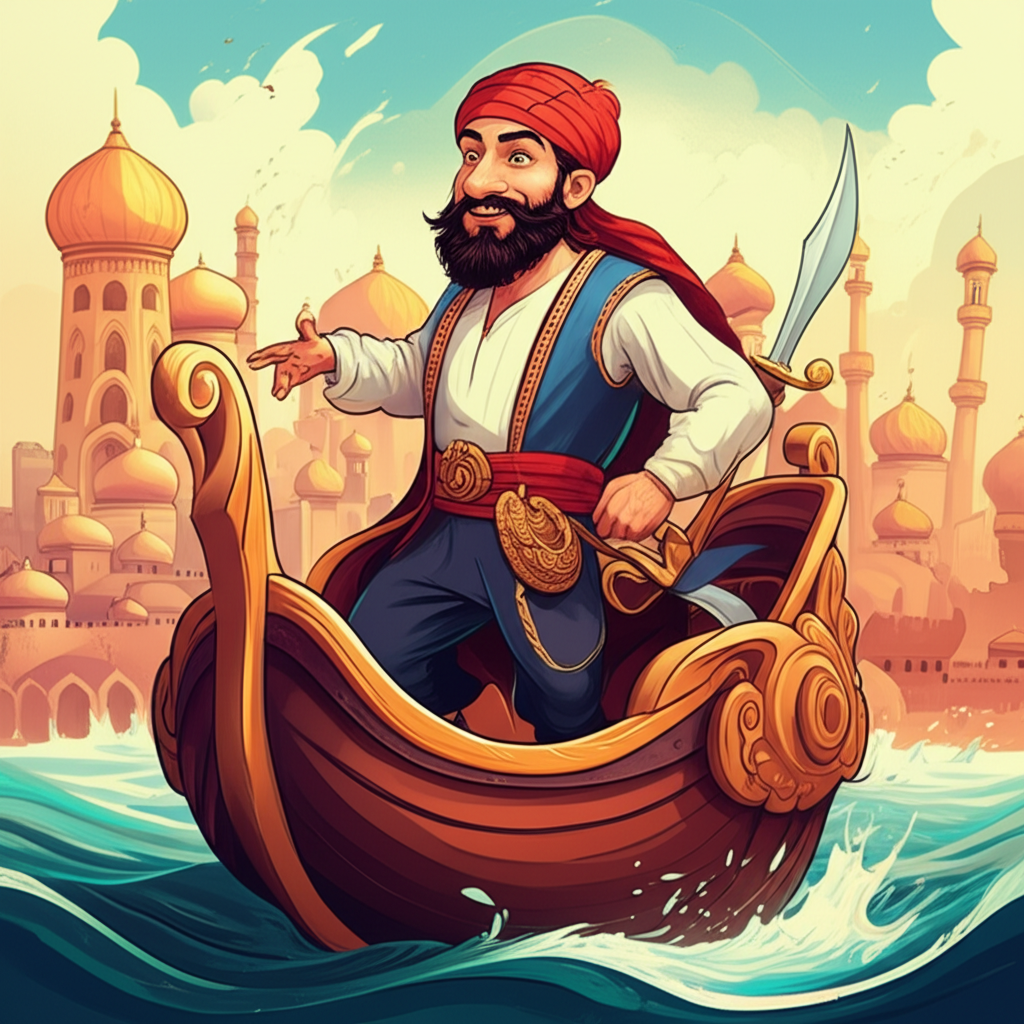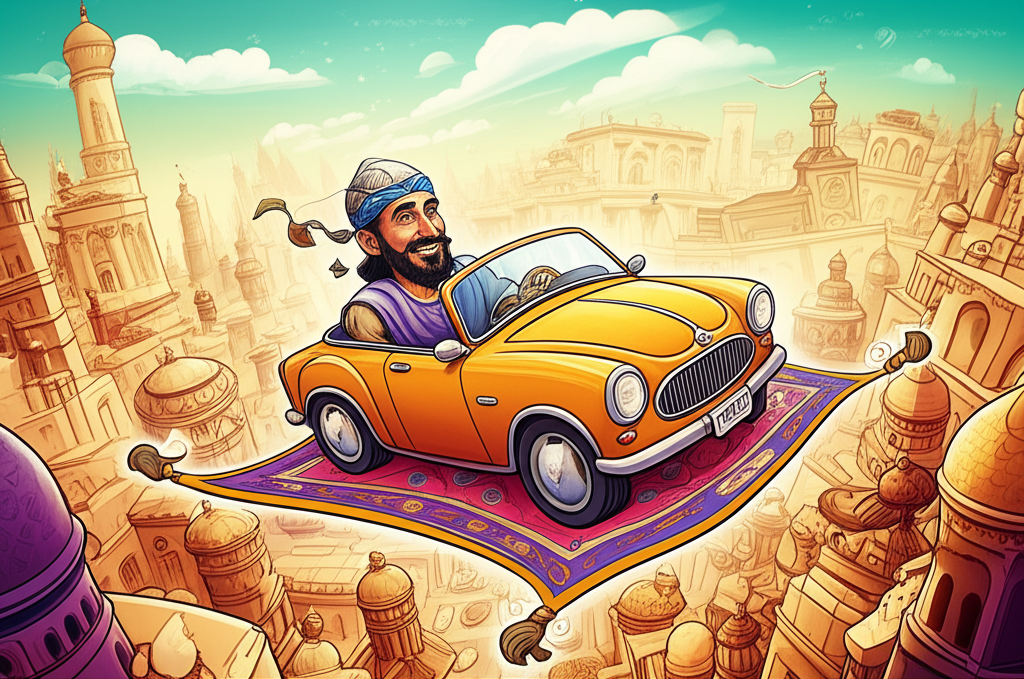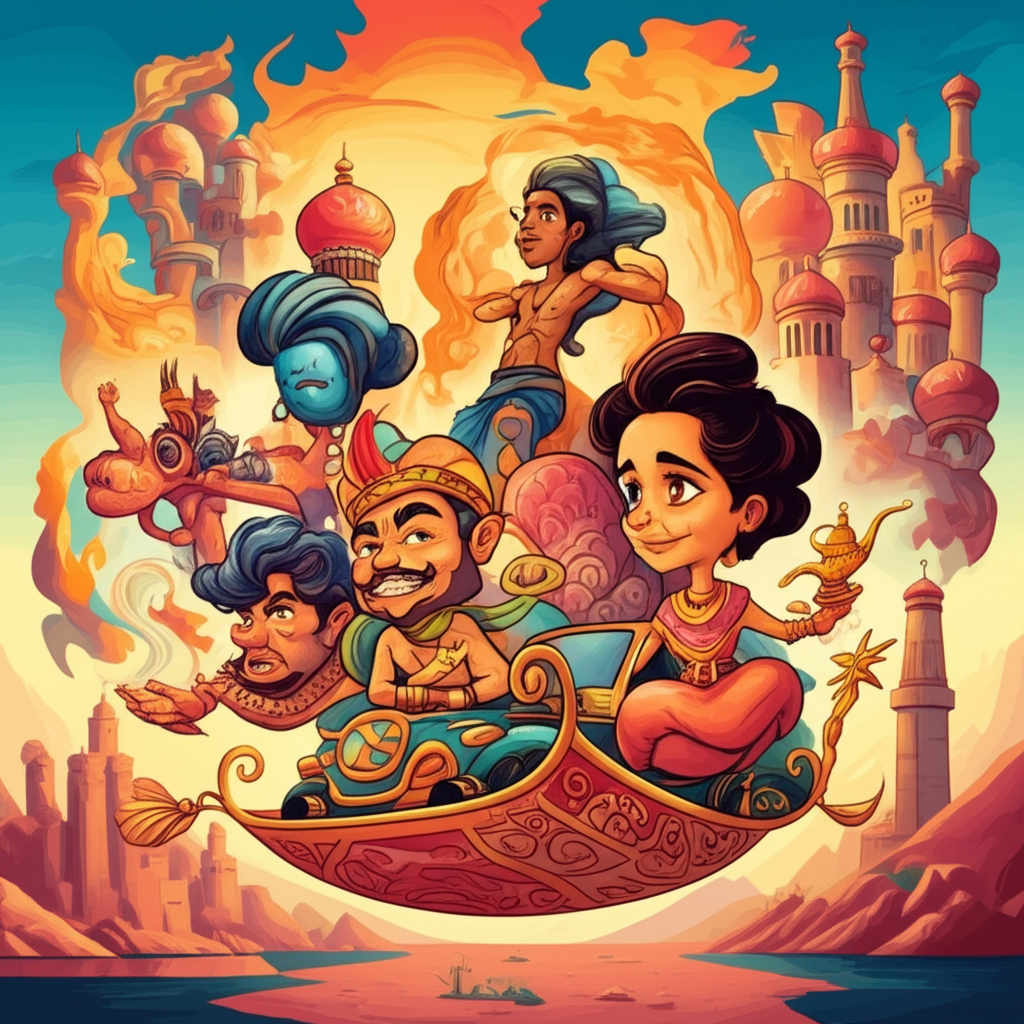
The air in ancient Baghdad was thick with the scent of spices, the murmur of countless tongues, and the intoxicating rhythm of life. Within its bustling souks and beneath its moonlit minarets, tales were woven as intricately as the carpets sold in its markets. Among the most enduring of these narratives are the Voyages of Sinbad the Sailor, a collection of fantastical journeys that have echoed through centuries, carrying with them the very soul of a vibrant, imaginative culture. These are not historical accounts, but rather the cherished stories passed down by word of mouth, a testament to the rich oral tradition of the people of the Arabian Peninsula and the wider Islamic world, particularly during the Golden Age of Islam.
To understand the context of Sinbad’s tales, we must travel back to a time when the world felt both vast and mysterious. The Abbasid Caliphate, with Baghdad as its glittering capital, was a nexus of trade, scholarship, and cultural exchange. From the 8th to the 13th centuries, scholars translated ancient texts, astronomers charted the heavens, and merchants traversed legendary routes, connecting the East with the West. In this era of burgeoning knowledge and far-flung discoveries, the worldview was one where the natural and the supernatural often intertwined. The sea was a powerful, unpredictable force, home to wonders and terrors unknown. The desert held its own secrets, and distant lands were populated by beings both marvelous and fearsome. It was a world ripe for storytelling, where the line between reality and imagination was often blurred in the telling.
At the heart of these extraordinary voyages stands Sinbad, a wealthy merchant from Baghdad. He is not a divine being, nor a prophet, but a human protagonist driven by an insatiable curiosity and a restless spirit. His defining characteristic is his resilience; he is a man who faces unimaginable perils, loses everything, yet consistently finds his way back to Baghdad, wiser and wealthier, only to be drawn back to the sea by the siren call of adventure. While Sinbad himself is human, his journeys are populated by creatures that represent the awe and fear the ancient world held for the unknown. There are the Rocs, colossal birds of prey whose wingspans could blot out the sun, symbolizing the sheer, overwhelming power of nature. Giant serpents, with their silent, deadly coils, represent the lurking dangers of the earth and the primal fear of the venomous. Mermaids, with their alluring songs, embody the seductive yet perilous mysteries of the ocean depths. These creatures are not worshipped, but rather serve as symbolic representations of the challenges and wonders that lay beyond the familiar horizons of human experience.
The narrative of Sinbad’s Seven Voyages is a tapestry of incredible adventures, each one a testament to his courage and ingenuity. In his first voyage, driven by a desire for wealth, he sets sail with a group of merchants. His ship lands on a deserted island, which turns out to be the back of a sleeping Roc. Awakened by the bird’s flight, Sinbad is carried to a valley filled with diamonds and guarded by monstrous serpents. He escapes by tying himself to the leg of a Roc, which carries him back to civilization. In his second voyage, he is abandoned on an island where he encounters a giant bird’s egg and later a formidable Roc, narrowly escaping its wrath. The third voyage sees him battling cannibals, a giant cannibalistic giant, and a monstrous serpent. Each subsequent voyage presents new challenges: a valley where rivers flow with molten gold, guarded by giant serpents; a meeting with the Old Man of the Sea, a creature that attaches itself to his back and can only be dislodged through cunning; a voyage to islands populated by beautiful women and strange creatures; and finally, a journey where he encounters a city built of solid gold and a king who has seen the wonders of the world. Throughout these tales, Sinbad’s primary tools are his wits, his perseverance, and his ability to learn from his mistakes. He is not granted supernatural powers, but rather relies on human intelligence and the fortunate intervention of circumstance.
The symbolism embedded within Sinbad’s voyages is rich and multifaceted. The Roc, in its immense size and power, can be seen as representing the overwhelming forces of nature that humans must navigate. The dangerous creatures and perilous landscapes symbolize the unknown dangers of the world, the fears that lurked in the minds of those who ventured beyond their familiar shores. The vast oceans themselves represent the boundless opportunities and immense risks associated with exploration and trade. Sinbad’s repeated loss of fortune and his eventual return to wealth symbolize the cyclical nature of fortune, the precariousness of material possessions, and the wisdom gained through hardship. His ability to overcome each challenge, often through cleverness rather than brute force, highlights the value placed on intelligence, resourcefulness, and resilience. The exotic lands and fantastical beings he encounters reflect a fascination with the distant and the unknown, a desire to explore the limits of the world and the imagination.
In the modern era, Sinbad’s Voyages continue to capture the imagination, transcending their origins as ancient folklore. They have been retold and reimagined in countless forms, from children’s books and animated films to epic movies and video games. These adaptations often emphasize the thrilling adventure and the fantastical elements, introducing Sinbad to new generations as a swashbuckling hero. In literary studies and cultural anthropology, the tales are analyzed for their insights into the values, beliefs, and worldview of the cultures that produced them. They offer a glimpse into the dreams and anxieties of a society that was both deeply rooted in tradition and eager to explore the wider world. The enduring appeal of Sinbad lies in his universal human qualities: his ambition, his curiosity, his capacity for fear, and his indomitable spirit in the face of adversity.
In conclusion, the Voyages of Sinbad the Sailor are not historical records or divine revelations, but rather a vibrant thread in the rich tapestry of human storytelling. They are a testament to the power of imagination and the enduring human desire to explore the unknown. As Muslims, we recognize that only Allah (God) is the true Creator and Sustainer of all that exists, and that these stories, while captivating and culturally significant, are works of human creativity. Sinbad’s melodies, born in the heart of Baghdad, continue to resonate, reminding us of the enduring legacy of oral tradition, the boundless capacity of the human spirit, and the sheer joy of a well-told tale that transports us to worlds both wondrous and wild. They are a cultural heritage, a celebration of imagination, and a timeless reminder of the stories that connect us across time and space.





